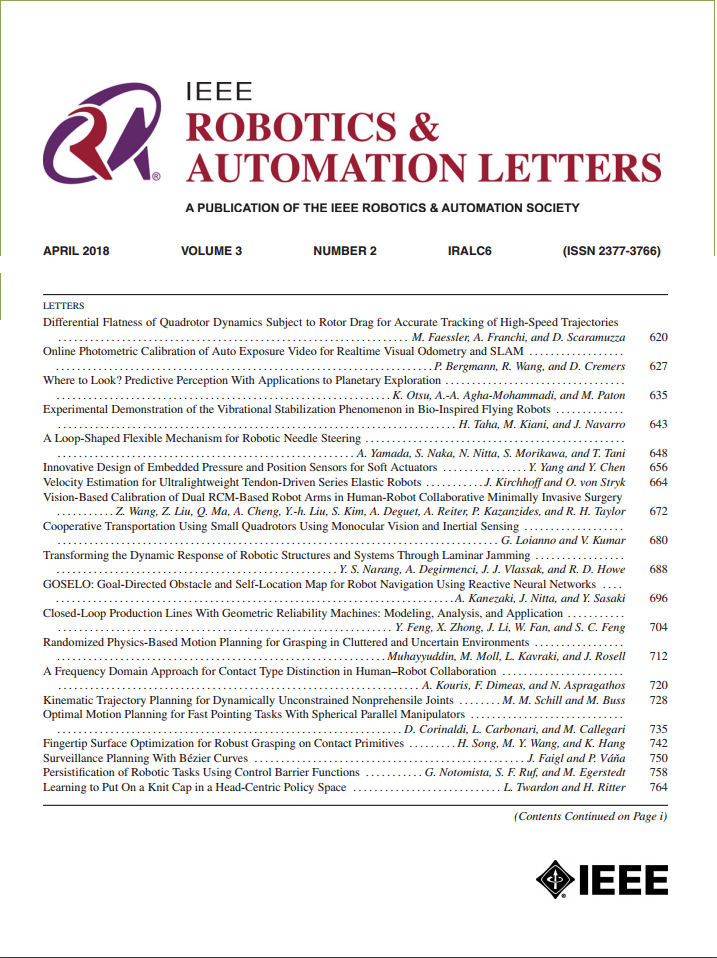揭示$SO(3)$并联机器人变体:最优机器人在仿人眼上的应用
IF 5.3
2区 计算机科学
Q2 ROBOTICS
引用次数: 0
摘要
本研究采用解析李代数方法对$SO(3)$型并联机器人变体进行了系统的运动分析和分类。这些机器人以其围绕固定点进行任意旋转的能力而闻名,这使得它们适用于各种应用。尽管它们的体系结构具有多样性,但现有的研究在很大程度上是在逐个案例的基础上对待它们的,限制了对所有潜在变体和从这种多样性中获得的好处的探索。通过反向螺旋法应用广义解析方法,系统地研究了产生$SO(3)$运动的肢体的运动学条件。因此,我们确定了73种不同的非冗余肢体类型,能够产生所需的SO(3)$运动。我们的方法包括深入的代数运动约束分析,揭示不同变体的共同特征。这使我们确定了73个对称和5,256个非对称变体,总共5,329个,每个变体都具有独特的功能。最后,我们从这个集合中选择了一个计算优化的小型化机器人用于类人眼系统。本文章由计算机程序翻译,如有差异,请以英文原文为准。
Unveiling $SO(3)$ Parallel Robot Variants: Application of the Optimal Robot to a Humanoid Eye
This study presents a systematic motion analysis and classification of $SO(3)$ $SO(3)$ $SO(3)$
求助全文
通过发布文献求助,成功后即可免费获取论文全文。
去求助
来源期刊

IEEE Robotics and Automation Letters
Computer Science-Computer Science Applications
CiteScore
9.60
自引率
15.40%
发文量
1428
期刊介绍:
The scope of this journal is to publish peer-reviewed articles that provide a timely and concise account of innovative research ideas and application results, reporting significant theoretical findings and application case studies in areas of robotics and automation.
 求助内容:
求助内容: 应助结果提醒方式:
应助结果提醒方式:


